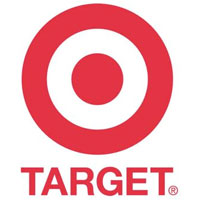 Target yesterday settled its class action lawsuit with the National Federation of the Blind (a suit that was originally launched back in early 2006). In the settlement, Target agreed to pay damages of up to $6 million to the NFB, which would then be distributed to individuals affected by the fact that the target.com web site was inaccessible.
I had to chuckle at the following part of the announcement:
Target yesterday settled its class action lawsuit with the National Federation of the Blind (a suit that was originally launched back in early 2006). In the settlement, Target agreed to pay damages of up to $6 million to the NFB, which would then be distributed to individuals affected by the fact that the target.com web site was inaccessible.
I had to chuckle at the following part of the announcement:
Bruce Sexton, Jr., a named plaintiff in the case from the beginning, added: “This settlement marks a new chapter in making Web sites accessible to the blind. I commend Target for committing to being a leader in online accessibility.”The very fact that this lawsuit existed in the first place is reason enough to conclude that Target is far from “a leader in online accessibility.” Sexton expended considerable energy lobbying Target to add basic accessibility features to their web site, including adding
alt text to their images, but they refused to entertain the idea that they might be obligated to do so.
The announcement that Target have finally agreed that they are obligated to accommodated blind visitors is basically a good one, despite concerns that visitors with other disabilities might not be taken into consideration, or that the settlement is too low a figure. The fact is that this settlement puts accessibility on the agenda for corporations who might otherwise think that ignoring disabled visitors to their web site is acceptable.
Paying out $6 million to visitors who might sue Target because they have low vision, or cannot use a mouse, is not something that Target will want to go through again. The precedent has been set now; the next time there’s a problem with the accessibility of target.com and someone complains, I’m betting Target will be listening.
Frequently Asked Questions (FAQs) about Website Accessibility Lawsuits
What was the basis of the lawsuit against Target for website accessibility?
The lawsuit against Target was based on the violation of the Americans with Disabilities Act (ADA). The National Federation of the Blind (NFB) claimed that Target’s website was not accessible to blind users, which is a requirement under the ADA. The lawsuit argued that the lack of accessibility features on the website, such as alt text for images and captions for videos, made it difficult for blind users to shop independently.
How did the lawsuit against Target impact other businesses?
The lawsuit against Target set a precedent for other businesses. It highlighted the importance of website accessibility and the potential legal consequences of non-compliance with the ADA. Many businesses have since taken steps to improve their website accessibility to avoid similar lawsuits.
What are some common features of an accessible website?
An accessible website should have features such as alt text for images, captions for videos, and keyboard navigation. It should also be compatible with screen readers and other assistive technologies. The website’s design should consider color contrast for users with color blindness and provide options to adjust font size for users with visual impairments.
What are the potential consequences of not having an accessible website?
Businesses that do not have accessible websites risk facing lawsuits for violating the ADA. They may also lose potential customers who cannot use their website due to accessibility issues. Additionally, they may face reputational damage as consumers increasingly value businesses that prioritize accessibility.
How can businesses ensure their websites are accessible?
Businesses can ensure their websites are accessible by following the Web Content Accessibility Guidelines (WCAG) developed by the World Wide Web Consortium (W3C). They can also conduct regular accessibility audits and make necessary adjustments. Hiring professionals with expertise in website accessibility can also be beneficial.
What was the outcome of the lawsuit against Target?
Target settled the lawsuit by agreeing to pay $6 million to the plaintiffs and committing to improve the accessibility of its website. The settlement also included an agreement for Target to work with the NFB to ensure its website remains accessible.
Are there increasing numbers of website accessibility lawsuits?
Yes, there has been a significant increase in website accessibility lawsuits in recent years. This trend reflects the growing recognition of digital accessibility as a civil right and the increasing reliance on online services.
What is the role of the ADA in website accessibility?
The ADA requires businesses to ensure their websites are accessible to people with disabilities. This includes providing reasonable accommodations, such as alt text for images and captions for videos, to enable independent use of the website.
How does website accessibility benefit businesses?
Website accessibility can benefit businesses by expanding their customer base to include people with disabilities. It can also improve the user experience for all customers, leading to increased customer satisfaction and loyalty. Additionally, it can enhance the business’s reputation as an inclusive and socially responsible entity.
What resources are available to help businesses improve website accessibility?
There are numerous resources available to help businesses improve website accessibility. These include the WCAG guidelines, accessibility testing tools, and professional accessibility consultants. There are also numerous online resources and communities dedicated to promoting and supporting website accessibility.
 Matthew Magain
Matthew MagainMatthew Magain is a UX designer with over 15 years of experience creating exceptional digital experiences for companies such as IBM, Australia Post, and sitepoint.com. He is currently the Chief Doodler at Sketch Group, Co-founder of UX Mastery, and recently co-authored Everyday UX, an inspiring collection of interviews with some of the best UX Designers in the world. Matthew is also the creator of Charlie Weatherburn and the Flying Machine.


